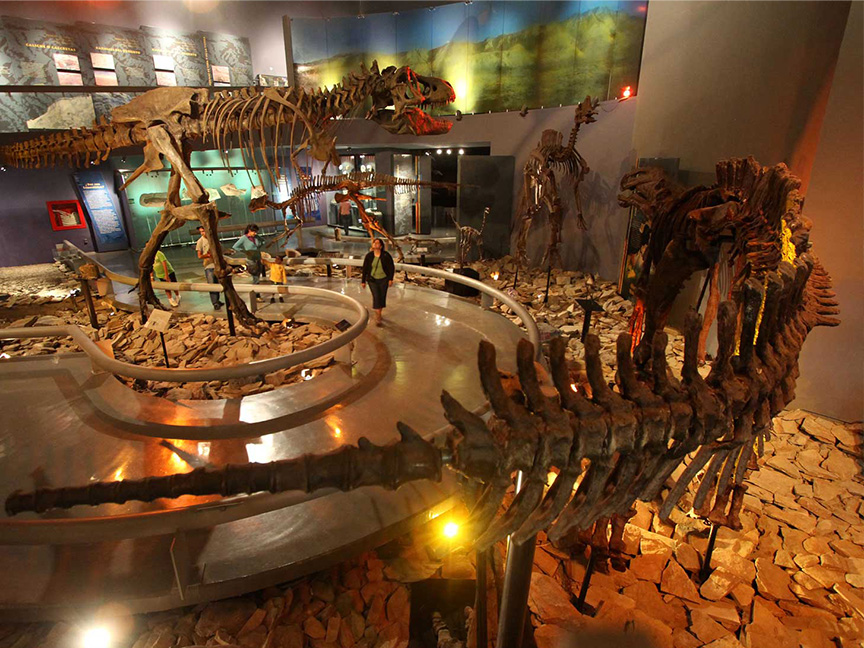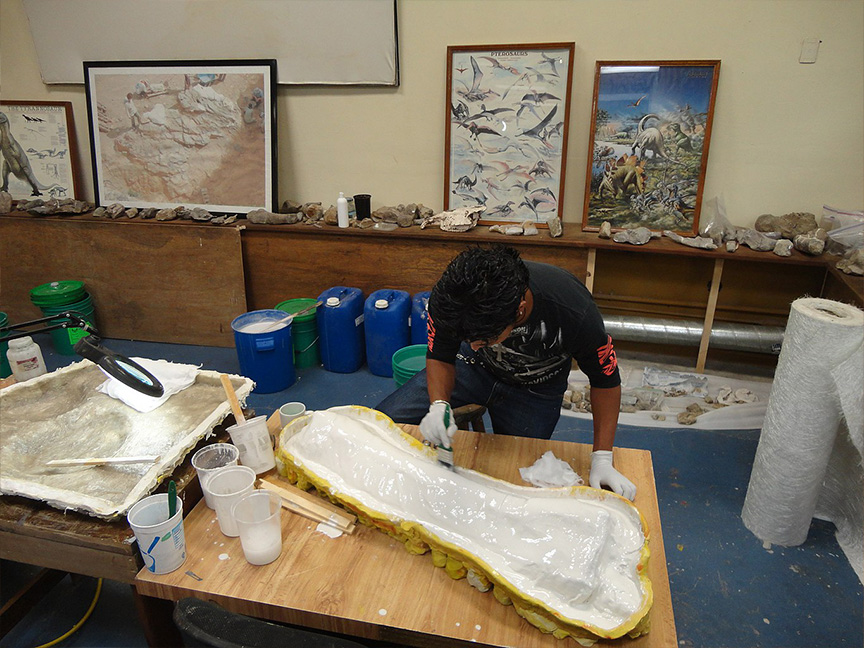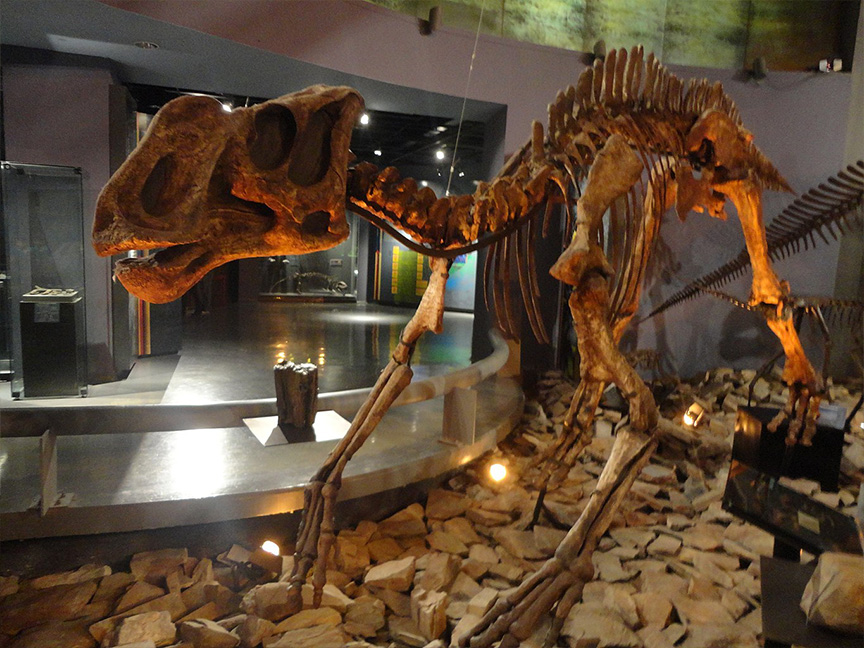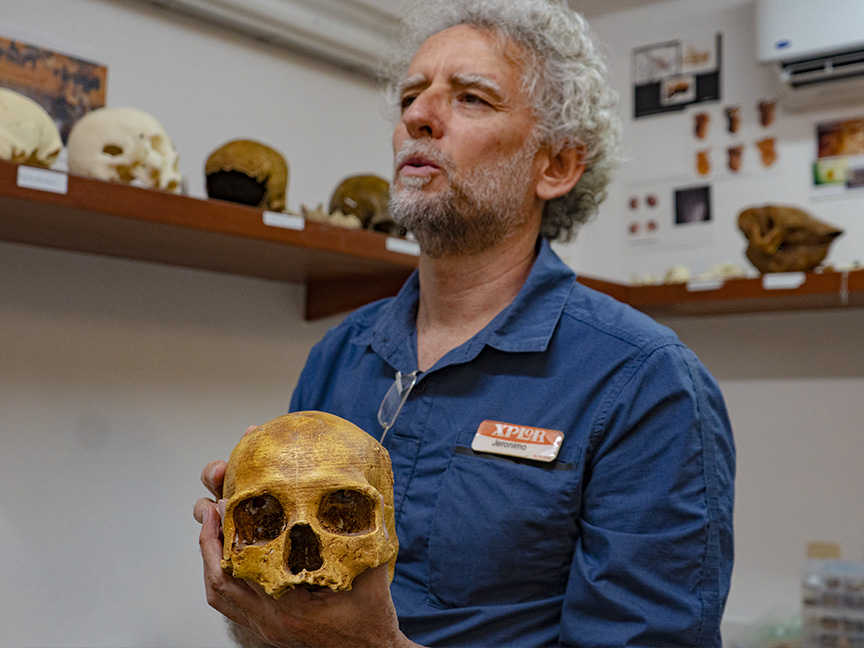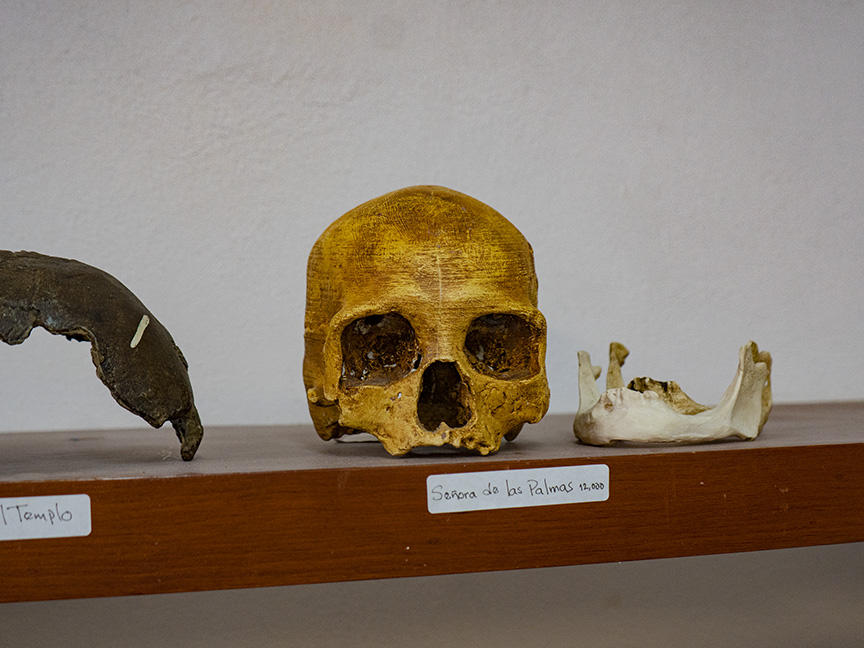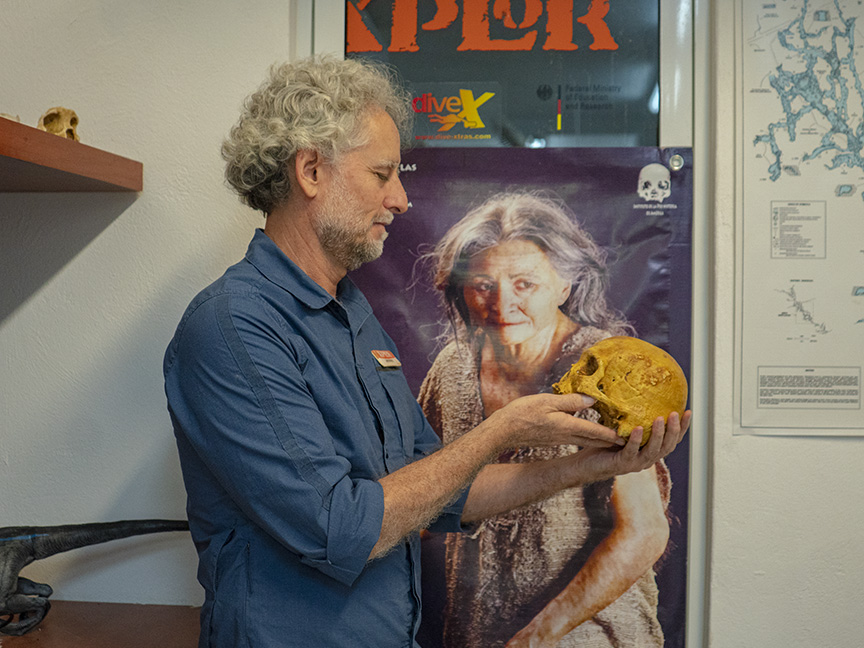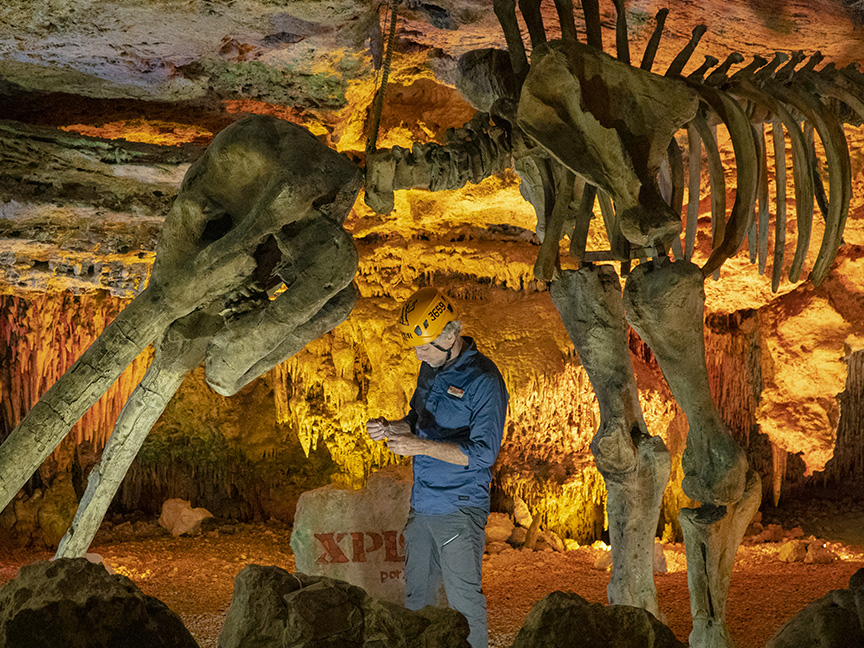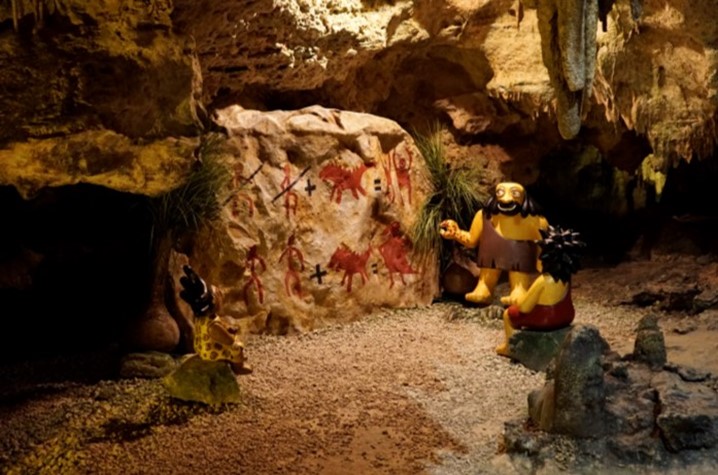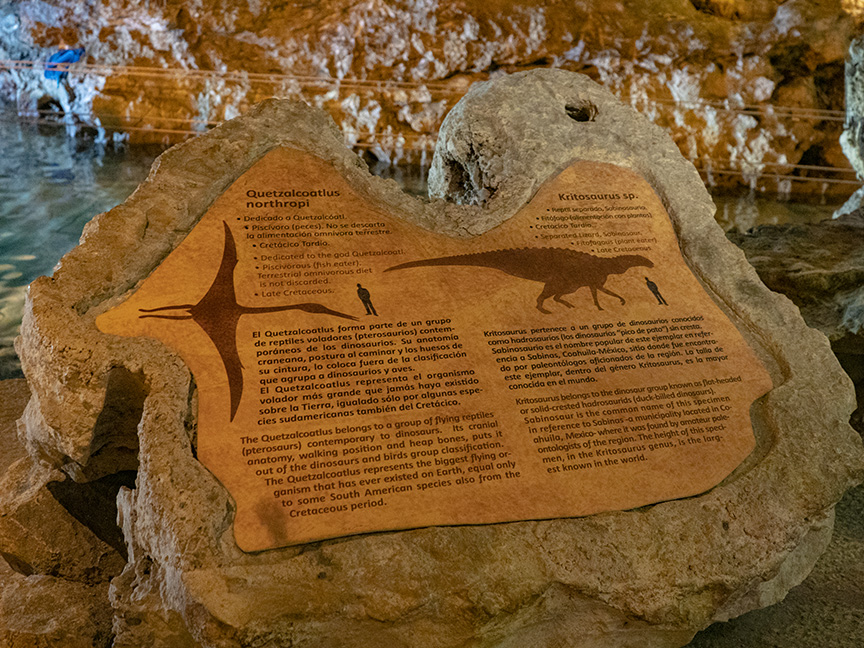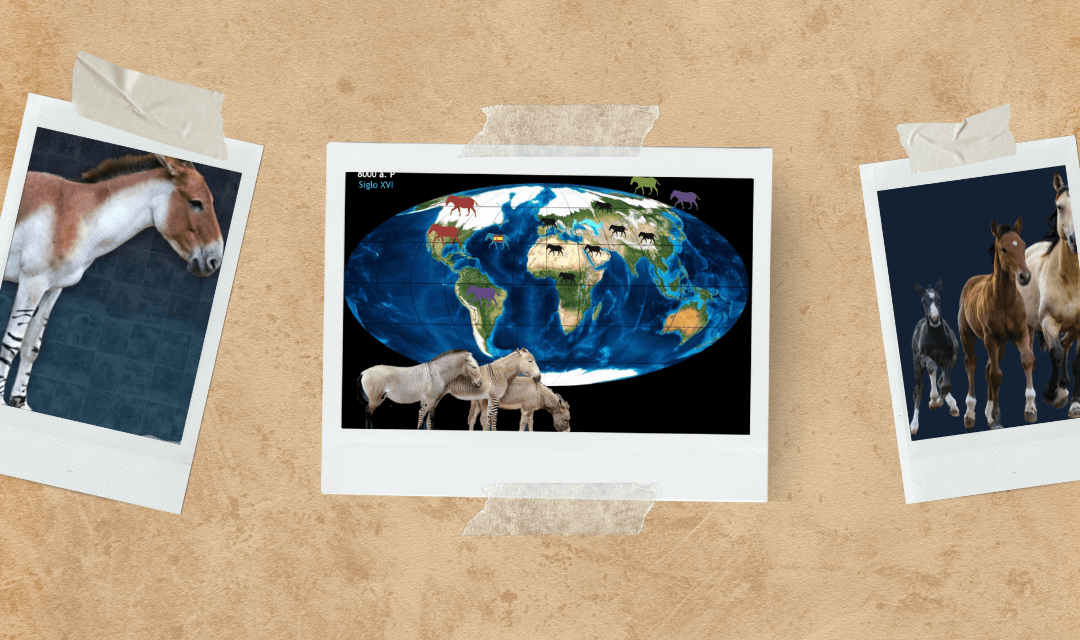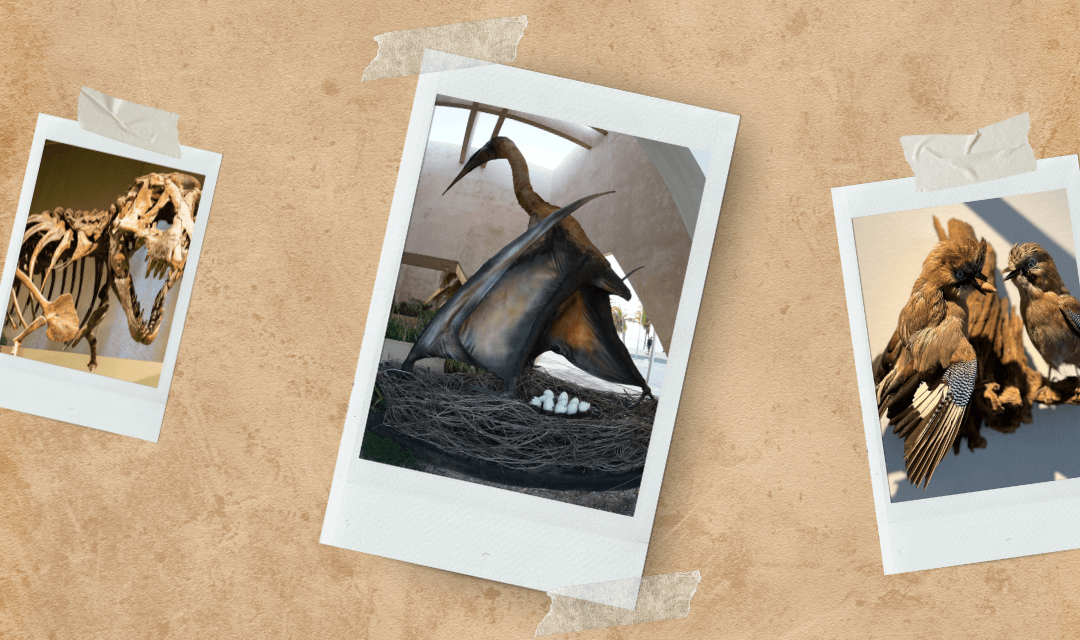The Desert Museum and Xplor together to tell the story of the Earth in Mexico
May 25, 2023
Do you know why there are dinosaurs in Xplor Park?
Learn about the work of MUDE researchers in the Riviera Maya.
The Desert Museum in Coahuila has positioned itself as one of the most important in Mexico. Here I will tell you a little more about this incredible place so that you can understand the importance of this collaboration with Xplor park in Riviera Maya.
This museum was founded on November 25, 1999, to expose and share the origin and characteristics of the deserts in the world and focus all its efforts on the three great deserts that we have in Mexico located in the states of Chihuahua, Sonora, Puebla, and Oaxaca.
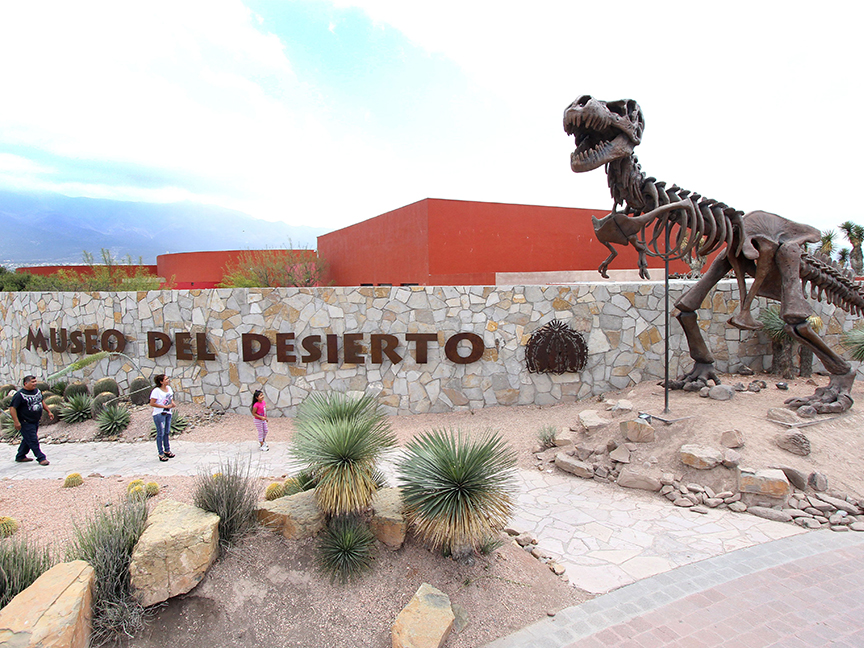
The association Amigos del Desierto de Coahuila, A.C. manages the museum and covers 12,300 m2 of construction. Among its communication pillars we find paleontology, geology, biology, sociology, history, and art.
The Desert Museum is one of the most important in Mexico and Latin America on natural history and life on Earth. The project of this museum arose from the discoveries of dinosaurs in Coahuila. It was proposed as a dynamic and living museum to understand the current ecosystem of the desert, as well as all the other species that turned into stone, hence teaching us how life has changed.
It has two rooms for temporary exhibitions in addition to its four pavilions:
- The desert and its past - The collections displayed in this pavilion allow exploring the origins of the deserts. It is also possible to appreciate its natural wealth, where coal is the main mineral extracted from this region. It has interactive activities in which the area's most recent discoveries in paleontology are presented.
- Man and the desert - This pavilion mainly shows the nomads' customs and rituals in the region. It is possible to appreciate its petroglyphs and cave paintings characteristic of this area.
- Evolution and biodiversity - This pavilion was inaugurated on August 4, 2005, and remodeled in 2014. It presents the traces of evolution over the last 12 thousand years.During this time, biodiversity included mammoths, saber-toothed tigers, short-faced bears, and gomphotheres. The museum houses a collection of fossils, including 162 specimens of Salinites grossicostatum.
- Ecosystems - Interactive pavilion that takes us back 70 million years, in which you can appreciate the immense amount of fauna through a biodome that offers a unique experience for visitors. It also has a herpetology laboratory where specialists work with the reptiles that live in the museum.

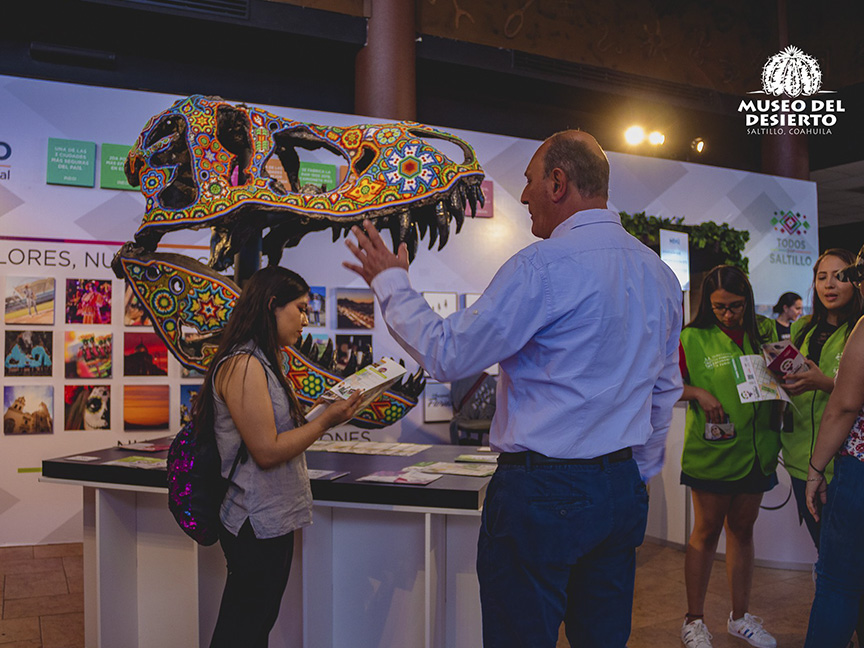
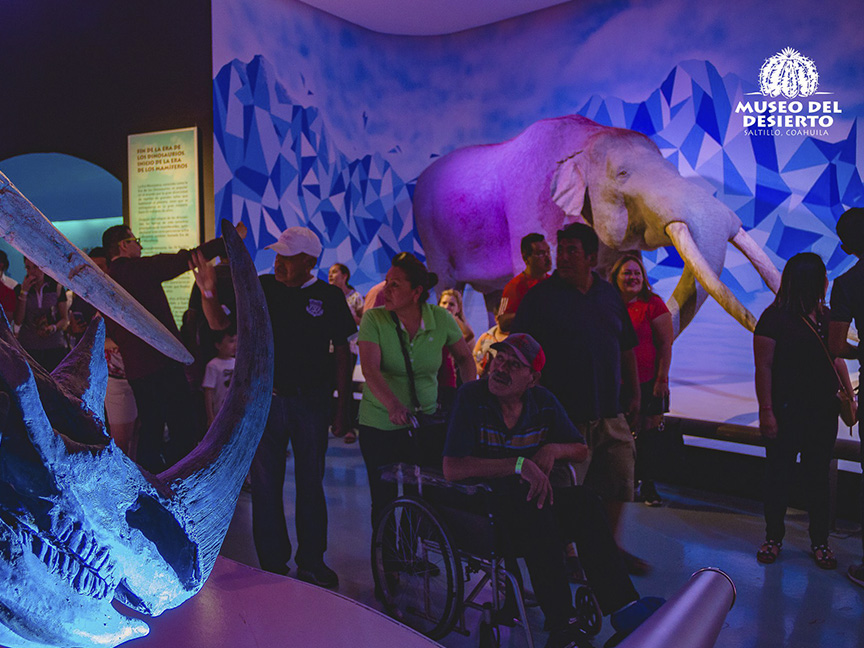

Now that you know more about the Desert Museum and its importance in research in Mexico, you will realize that having an alliance with Xplor park is an excellent step for rediscovering Riviera Maya’s history.
As you can imagine, this work is in the hands of very professional expert people, let me introduce you to them. Everything that you will read in the following lines about Jerónimo and Arturo was thanks to the fact that we had a small chat where they shared a little bit about their work and who they are.
PREHISTORIC MEXICO
Prehistoric Mexico is an unknown chapter of our past that we are discovering thanks to all the research efforts carried out through different institutions such as the Desert Museum in Coahuila.
So far, fossils and evidence of the existence of dinosaurs have been found in the country, and these are just some of the states in which these discoveries have been made:
- Baja California
- Sonora
- Chihuahua
- Nuevo León
- Michoacán
- Oaxaca
- Puebla
- Guerrero
- Coahuila
- Chiapas
- Tamaulipas
Suppose we could divide Mexico into prehistoric times. In that case, Baja California has essential deposits from the Cretaceous period in the entire North American Pacific, in addition to the fact that skin impressions and bone fragments have been found in this state.
Evidence of these large animals has been found in Chiapas through footprints dated about 100 million years ago.
Another of the prehistoric periods found in Mexico is the Jurassic one, and the most important site of this era is in the Huizachal Canyon in Tamaulipas.
Although dinosaurs have not yet been discovered in Quintana Roo, the state is located in the Yucatán Peninsula, which allows us to find significant evidence of these eras due to the impact of a meteorite that caused the mass extinction of the dinosaurs.
The entire Yucatán Peninsula is connected by several underground cave systems that cover vast areas that have not yet been fully explored and studied.
The most relevant systems have been found in Quintana Roo, where the multidisciplinary team of Xplor and the Desert Museum have made discoveries of relics of America's first inhabitants.
On the other hand, the state of Coahuila has great potential in terms of prehistoric fossil finds, such as in Rincón Colorado, which is now a paleontological area open to the public where you can appreciate and admire the evidence of the existence of dinosaurs in Mexico.
As you can see, Mexico is a great place to investigate, explore, and discover more of the world's prehistoric legacy.
EXPERTS
Jerónimo Avilés
He is a speleologist, paleontologist, and graduate in bioarchaeology and physical anthropology, as well as a talented videographer and photographer. Science has always been his passion, and he has had the opportunity to work and collaborate on various multidisciplinary projects. His internationally published scientific articles have helped build new knowledge.
His passion for underwater research began in 2004, and it was precisely that year that he met the current director of the Desert Museum in Coahuila, Arturo González, who was working on an INAH pre-Hispanic archeology project.
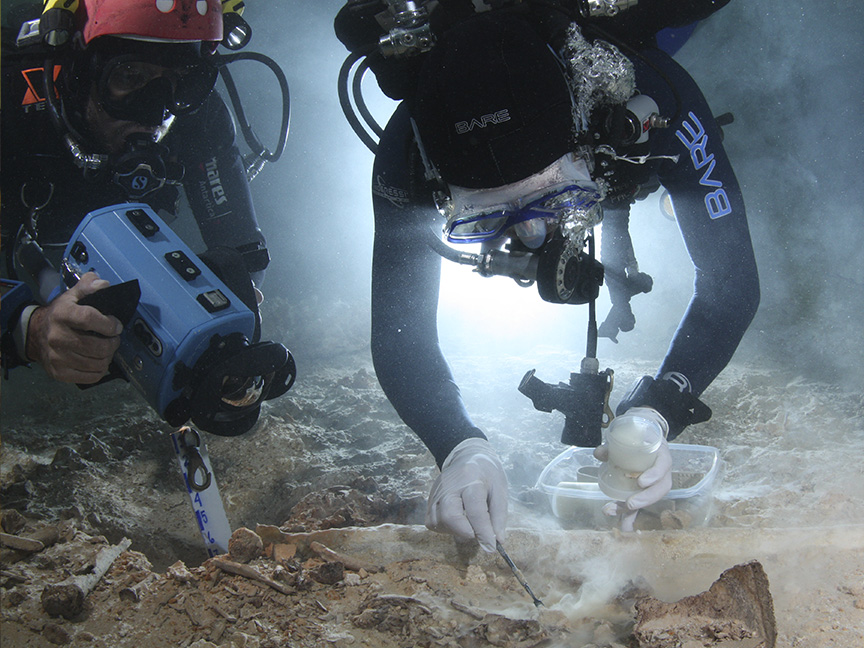

One of the most important discoveries by the team of Jerónimo and Arturo was that of nine ancient human skeletons (between nine thousand and thirteen thousand years old), in which La Señora de las Palmas (lady of the palms) stands out, which is cataloged as one of the first inhabitants of the region and one of the three oldest skeletons in America.
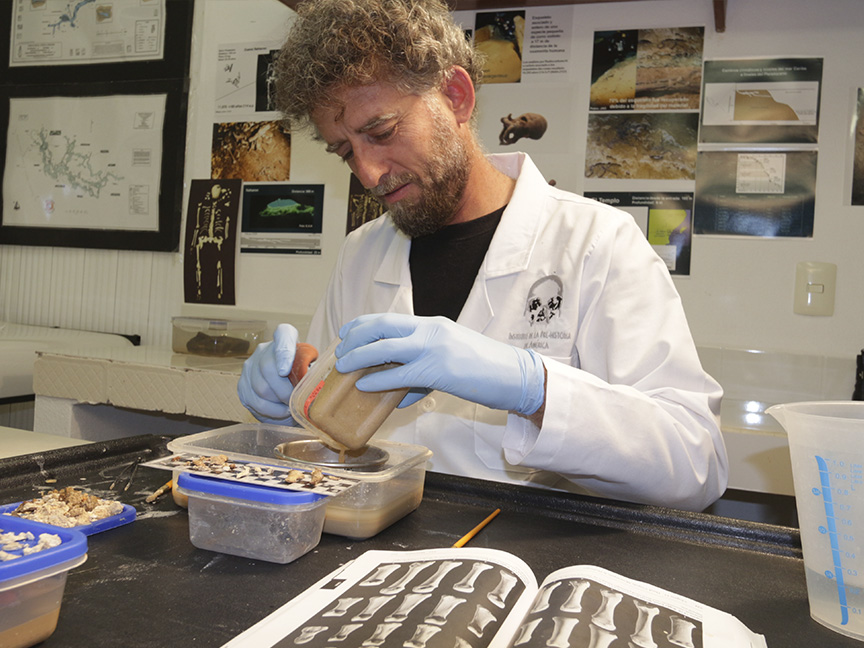
Arturo Homero González
Arturo says that he has been a biologist since he was six years old, as well as an archaeologist and a paleontologist. He has dedicated his life to understanding all the phenomena of the past, especially those related to the origin of mankind. He studied biology and archeology simultaneously, and like Jerónimo, he is a diver specialized in subaquatic archeology, having produced several documentaries on the subject.
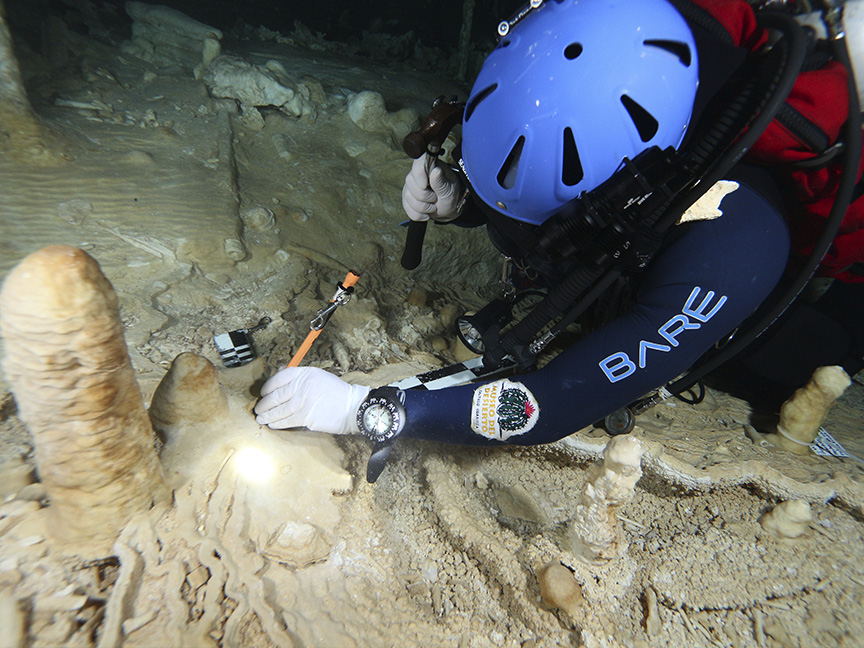
He has promoted various programs for the rescue of wildlife, as well as species that are in danger of extinction. He was selected among more than 1,500 participants from 127 countries to obtain the 2008 Rolex Award for Entrepreneurial Initiative for his projects in the field of archeology and paleontology.
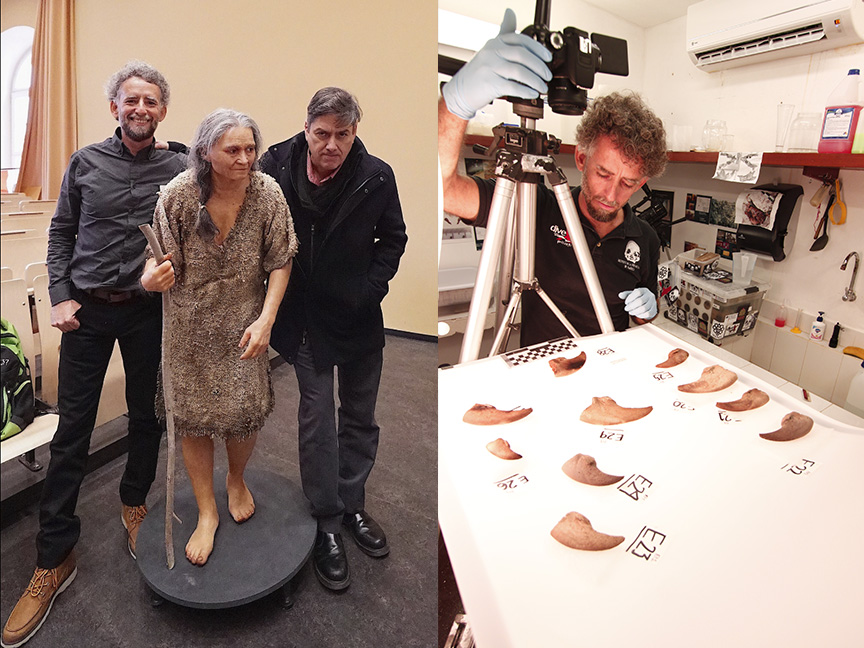
He is currently the director of the Desert Museum, the only one in Mexico that has carried out paleontological research since its inception in 1999, and together with the museum, has worked hand in hand with institutions such as UNAM and the National Polytechnic Institute.
The alliance
If you have visited Xplor park, you have enjoyed and admired its prehistoric theme through the exhibitions of different dinosaur skeletons inside the caverns. This is part of what has been achieved thanks to this collaboration, but there is still more to discuss.
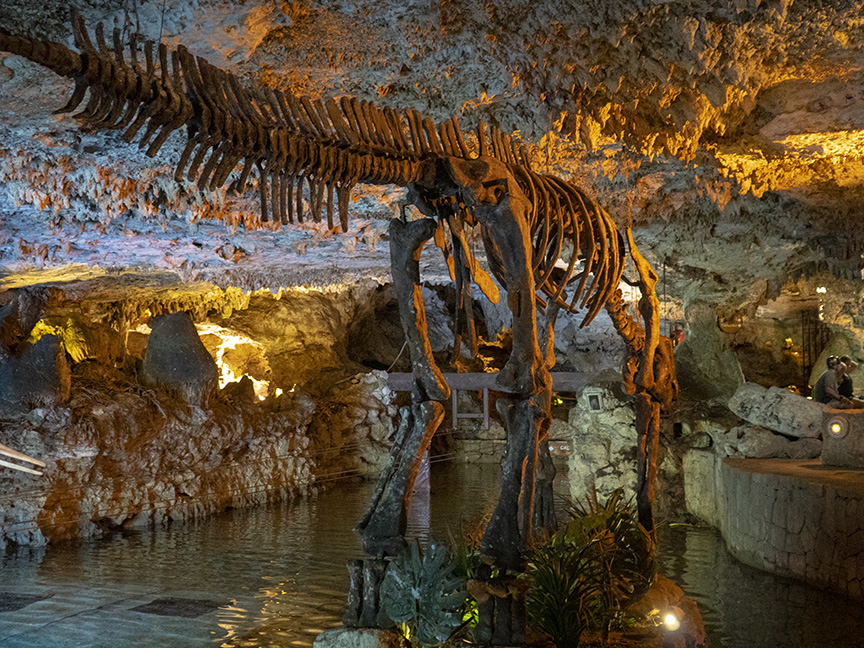
The first approach that gave life to this alliance arose many years ago, even long before Xplor park existed. Arturo and his team were the ones who helped us explore all the caves, guaranteeing the protection and conservation of its archaeological and paleontological elements.

This collaboration is given thanks to the sensitivity and interest of Grupo Xcaret to promote research in Riviera Maya to better understand and care for all these areas of historical interest and thus better understand processes such as the extinction of the megafauna, the elevation of the seas, as well as the first men who inhabited the region.
This is how the Desert Museum and Grupo Xcaret joined efforts to promote the exploration, recovery, and material registration works through the Xplor labs, which have been built and enabled for this purpose.
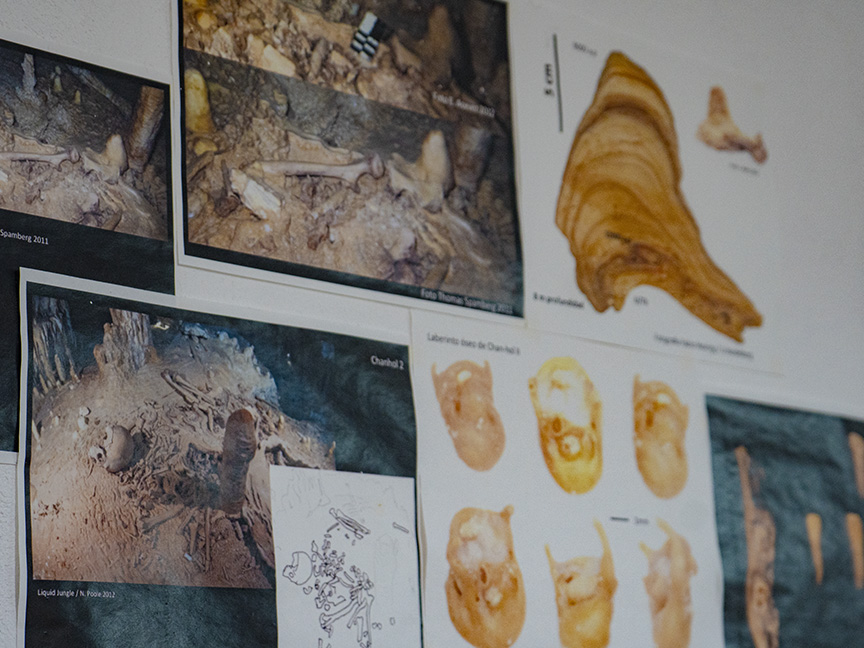
All the research carried out by Grupo Xcaret has been fundamental to understanding the processes of human occupation in America. It has been possible thanks to the discovery of skeletons that are considered the oldest in Mexico, and with them, the first indications of prehistoric funeral rites were recorded.
With the results obtained from the investigations, it has been possible to create links with the community that help bring all this knowledge closer in a practical way to arouse everyone's curiosity, such as talks given by Jerónimo at the Playa del Carmen Planetarium or the exhibitions that you can find in Xplor in which the life of these magnificent extinct beings is detailed.
Can you imagine being able to make a discovery as important as the one made by the team from the Desert Museum and Xplor park?
Jerónimo understands that to continue advancing in the field, more experts are needed. He even thinks that the best age to encourage this interest is childhood:
"There is no better way to teach infants than through play, recreation, and leisure. Childhood is a good moment because kids are receptive and want to explore the world. It must be something that children can touch, that is colorful, just like Xplor does with colored lights and an underground atmosphere"
Jerónimo oversees the sharing of this information in an appropriate format to transmit this knowledge through talks where the community can touch replicas of discovered pieces that help them understand the great work done to obtain it.
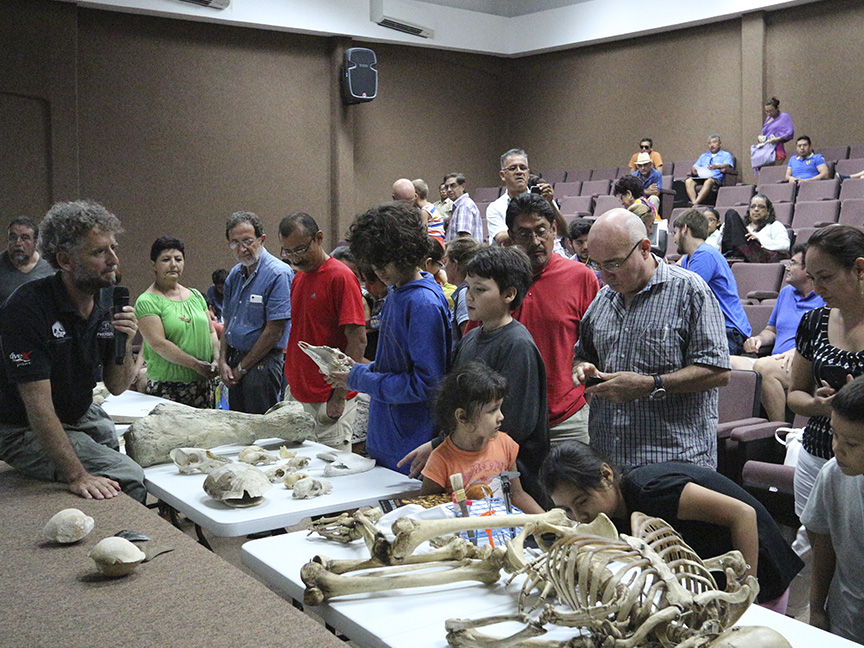
He has also been the source of inspiration for several people who have wanted to dedicate themselves to this field of research, and even during his talks, he has been able to witness incredible moments when the community itself is the one who delivers objects that add more history to what is found.
This is only part of the result obtained with the joint work of the Desert Museum and Grupo Xcaret with Xplor park, since there are many more projects derived from this initiative that I will tell you about in another chance.
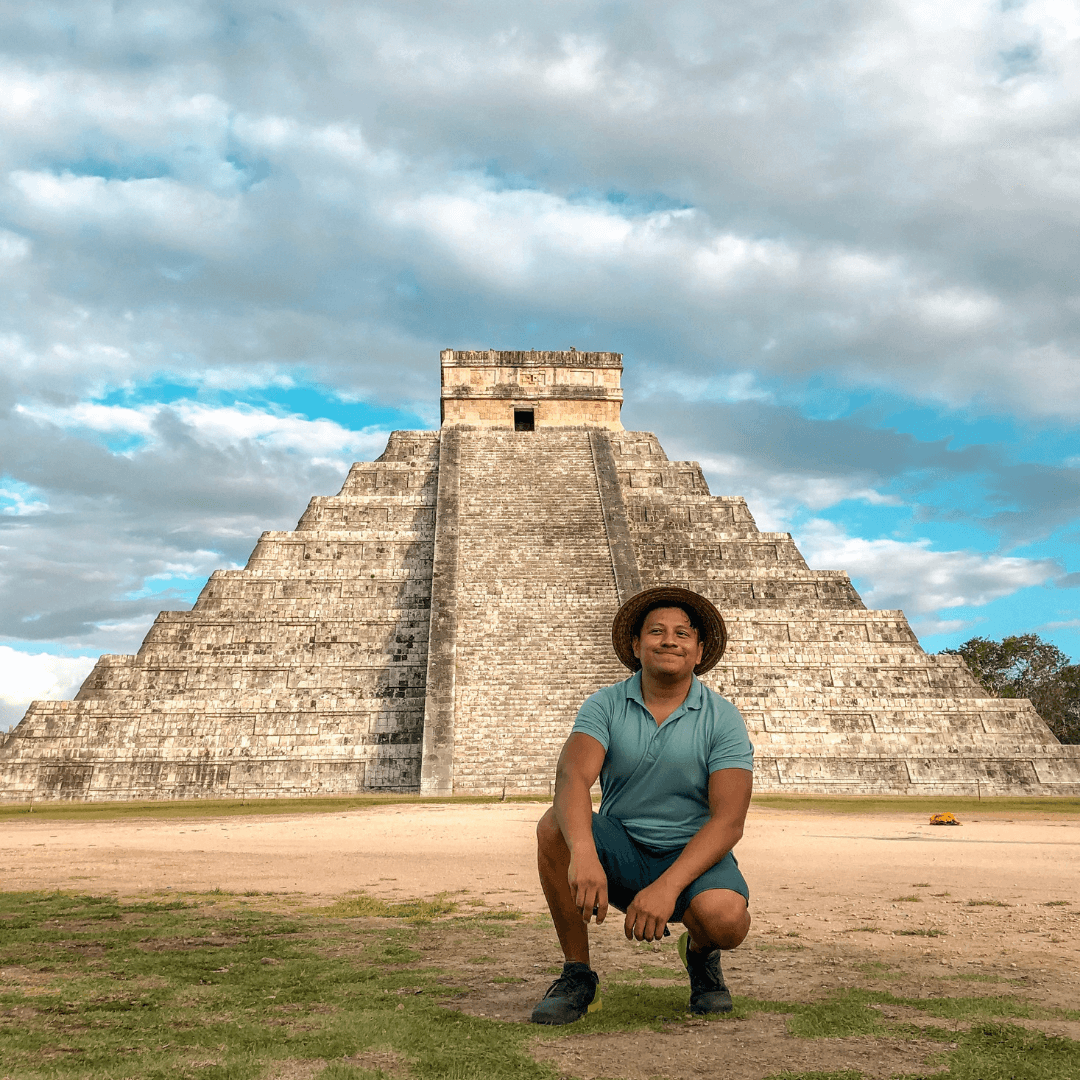
Apasionado por lo no establecido, viajo y colecciono historia para compartir con quien quiera escuch...

Posts Relacionados
Grupo Xcaret
Hotels
